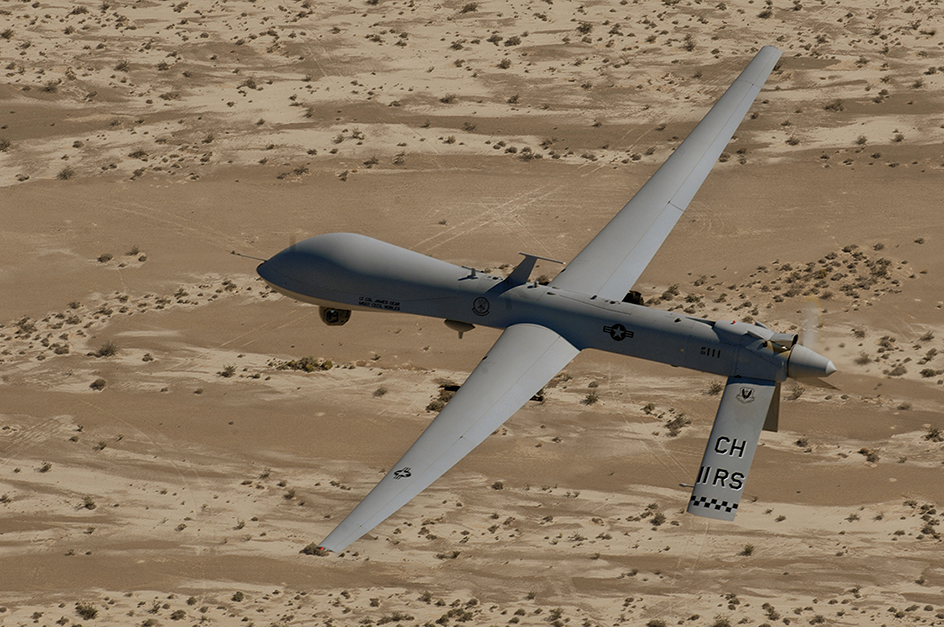Aircraft, Military. Military aircraft are airplanes, helicopters, and other flying machines used for military purposes. Most military aircraft are operated by pilots. But unmanned aerial vehicles (UAV’s)—often called drones,—carry no crew and are guided by electronic devices.

Armed forces use military aircraft for a wide variety of tasks in both combat and peacetime. During a war, these aircraft attack enemy forces, protect and transport troops and supplies, defend territory, and carry out many other types of missions. Peacetime uses include rescue operations and scientific expeditions.
Military aircraft range from drones the size of small model airplanes to huge transport planes that carry tanks and trucks. Their speeds also vary greatly, reaching more than 2,000 miles per hour (mph), or 3,200 kilometers per hour (kph), for some jet planes. Certain aircraft are designed for specialized duties. For example, some military planes take off and land vertically, enabling them to operate from ships and rough terrain. Others can fly at extremely high altitudes to escape enemy missiles or at low altitudes to avoid detection by radar.
Types of military aircraft
Most military aircraft are fixed-wing aircraft (airplanes) or rotary-wing aircraft (helicopters). They are classified by their function. Those that can perform more than one type of mission are designated by their original or principal use. Military planes include (1) bombers, (2) fighters, (3) reconnaissance aircraft, (4) transports, (5) tankers, and (6) special-mission aircraft. Some of these classifications are also used for helicopters.
Bombers
attack targets with bombs, missiles, rockets, and other weapons. The two main kinds are strategic bombers and fighter-bombers. Most strategic bombers are large, long-range airplanes that can attack targets deep inside enemy territory. They have two or more jet engines and a crew of two to six people. One such strategic bomber, the American-made B-1B, can fly up to about 7,500 miles (12,000 kilometers) without refueling. Its top speed is Mach 1.25, which is 11/4 times the speed of sound. The American B-2 “stealth” bomber has special features that make it difficult to detect by radar. These features include surface materials that absorb radar energy and a winglike shape that deflects radar beams.
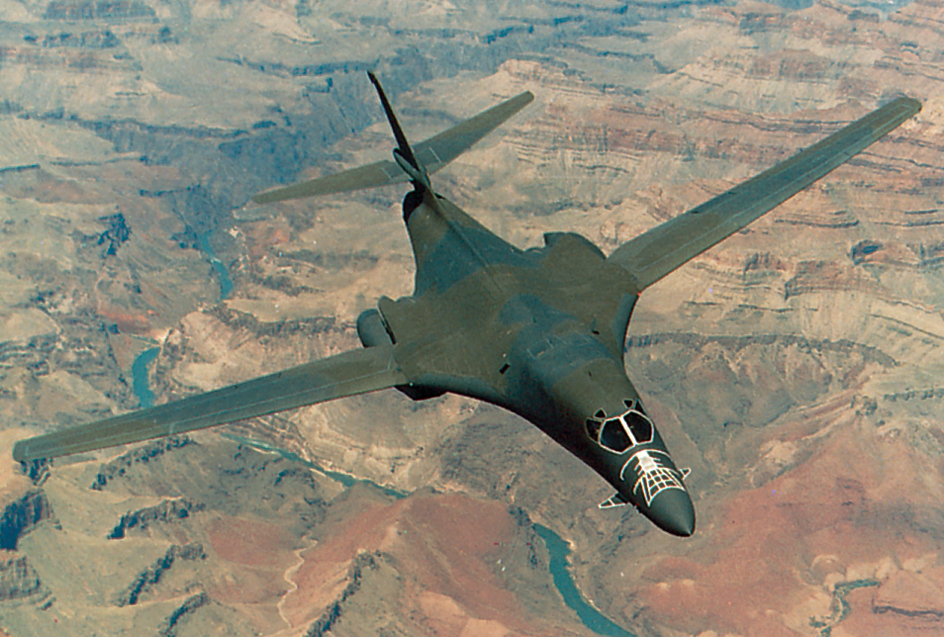
Most fighter-bombers, also called attack planes, are small, short- to medium-range aircraft with one or two jet engines and a crew of one or two people. These planes are used primarily to attack ships and ground forces. One of the most advanced fighter-bombers is the American F-117 “stealth” fighter. Features much like those of the B-2 bomber make the F-117 difficult to detect by radar.
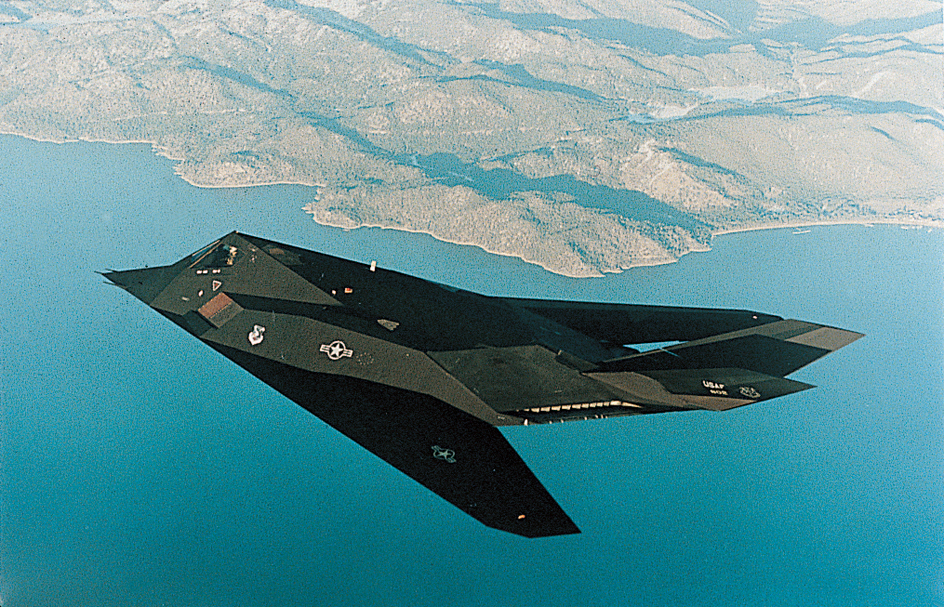
Fighters
are used chiefly to intercept and attack other aircraft, but they also hit ground targets. These planes must be fast and easy to maneuver. Most fighters carry cannons, rockets, and missiles. They have one or two jet engines and a crew of one or two people. Many have swept-back wings, which slant backward from the plane’s body to the tip of the wing, or triangle-shaped delta wings to provide great speed. Two widely used fighters, the Russian MiG-29 and the French Mirage, can fly faster than Mach 2.
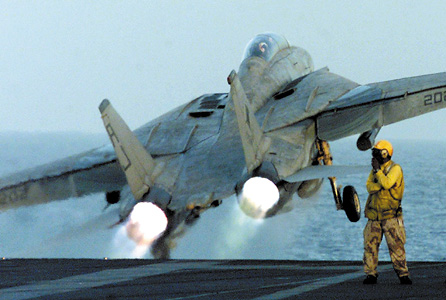
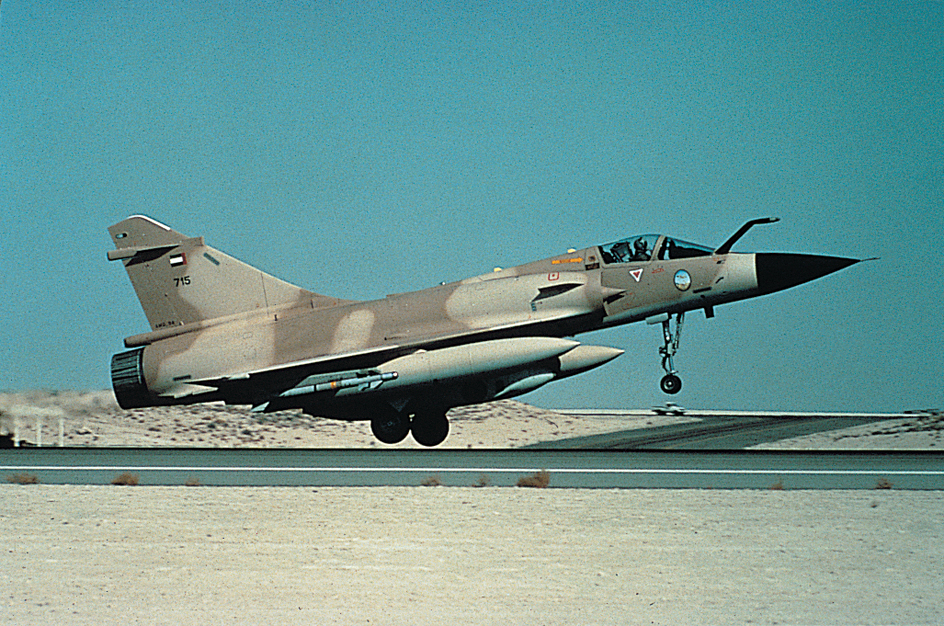
Reconnaissance aircraft
are equipped with cameras or electronic sensing devices for collecting information about enemy forces. The TR-1, one of the few American reconnaissance aircraft, is used to locate enemy forces during wartime. The plane’s sensing devices can detect signals from enemy radars, communications, and other electronic equipment. Some reconnaissance aircraft photograph enemy forces and bases. However, artificial satellites that orbit the earth carry out most photographic reconnaissance today.
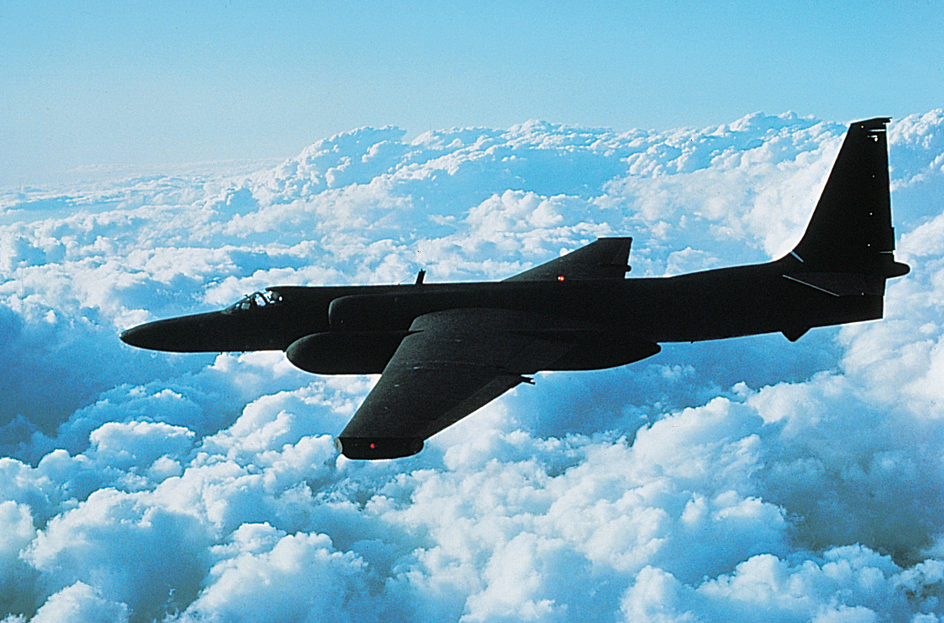
Transports
carry military personnel and equipment. Almost any aircraft can be used as a transport, but some combat situations require specially designed planes. Most such specialized transports have oversized tires on their landing gear and high-lift devices on their wings that enable the planes to use short, unpaved runways. The largest transport, the Russian Antonov An-124, can carry more than 330,000 pounds (150,000 kilograms). Some transports are equipped with guns to convert them to attack aircraft called gunships.
Tankers
refuel other aircraft in flight. A tanker must be able to fly at the same speed and altitude as the planes it refuels. The planes approach from behind and below and pick up refueling tubes that trail from the tanker. Nearly all tankers are modified bombers, cargo aircraft, or commercial airliners. The U.S. Air Force uses the KC-135, a version of the Boeing 707 airliner, and the KC-10, a version of the McDonnell Douglas DC-10.
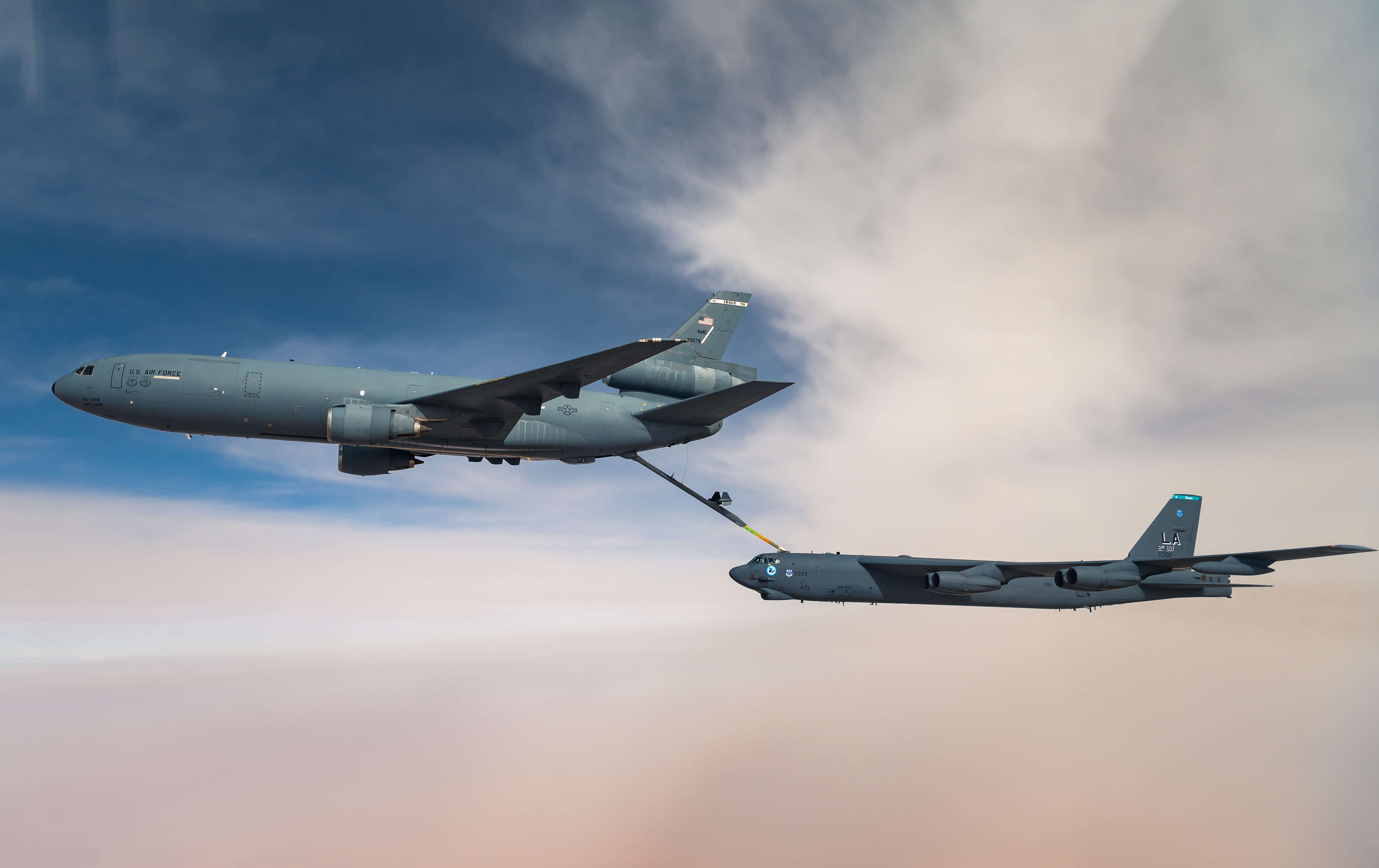
Special-mission aircraft
include electronic support aircraft, trainers, and drones. Electronic support aircraft contain sensitive electronic instruments. Some of these aircraft are used to interfere with enemy radar and other electronic equipment. Others guard against air or ground attack and serve as command centers in a war. The U.S. Air Force uses the Airborne Warning and Control System (AWACS) aircraft. A radar dome on top of this plane can detect and track aircraft and missiles. Trainers are used to train pilots and are designated by the stage of training in which they serve—primary, basic, or advanced. They range from planes with piston engines to jet aircraft that can be used for both training and combat.
Drones of various sizes are used for hazardous reconnaissance missions, for firing missiles at enemy targets, and as targets in combat practice. Some notable drones, such as the General Atomics MQ-1 Predator and MQ-9 Reaper, take off and land on runways. They are powered by turboprop jet engines and can circle slowly over targets for many hours. Smaller drones, such as the AeroVironment RQ-11 Raven, can be carried by troops into war zones and launched with a toss of the hand.
Helicopters
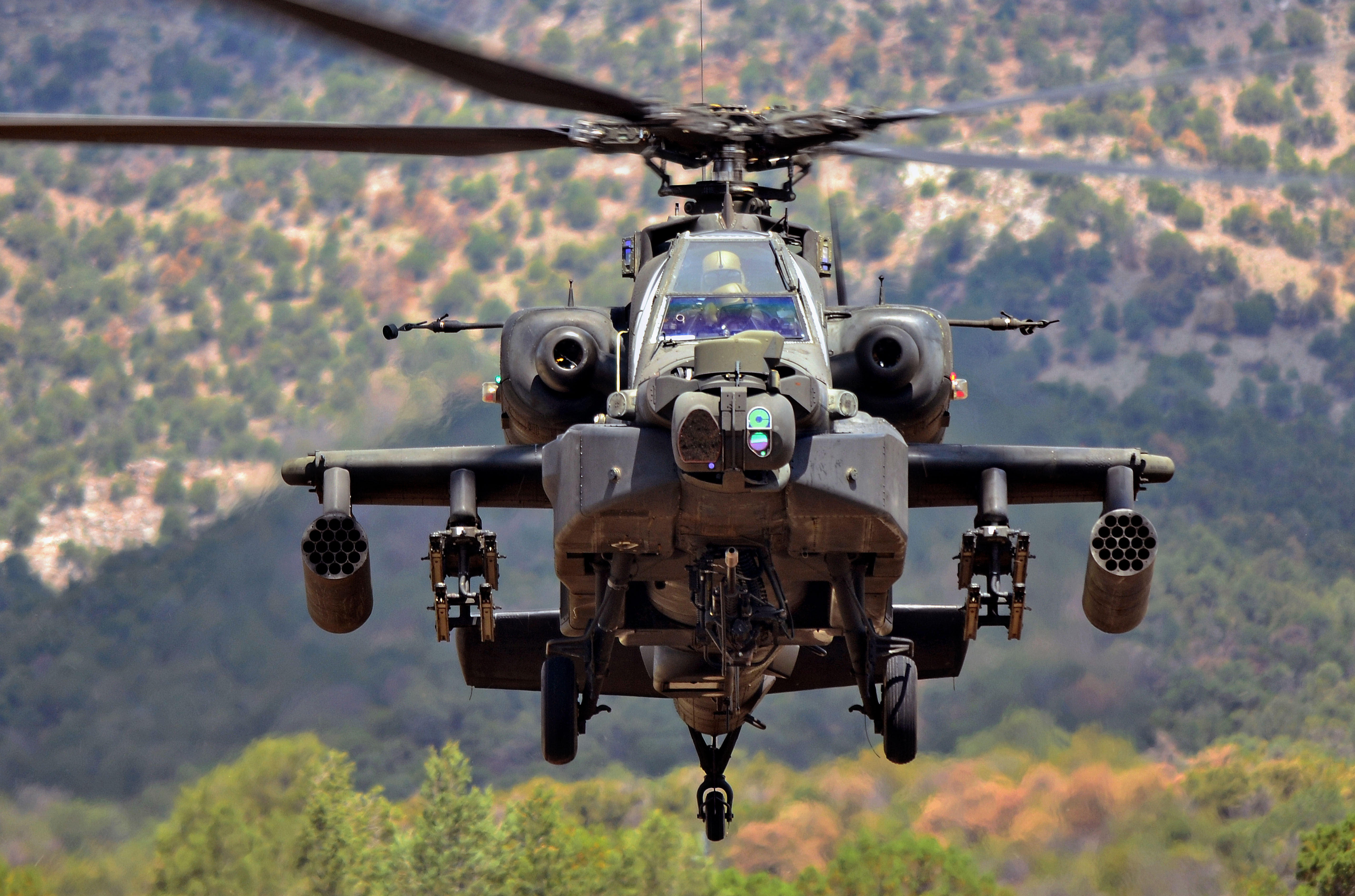
play an important role in military operations because they can be used in a variety of missions. They have the ability to take off and land almost anywhere, and they can hover over one spot. Helicopters serve chiefly as attack aircraft, reconnaissance aircraft, and transports. Some attack helicopters are called helicopter gunships. A gunship, such as the American-made AH-64 Apache, can carry cannons and missiles to attack targets on the ground and in the air. Other helicopters are specially equipped for antisubmarine warfare. The American-made OH-58 Kiowa, the British Lynx, and other small helicopters are used for reconnaissance and light transport duty. The largest transport helicopters can pick up and carry planes, tanks, or trucks by using cables suspended from the helicopters.
History
The first military aircraft
were balloons filled with gas or hot air. In 1794, the French Army sent up soldiers in balloons to observe enemy troop movements. During the 1800’s, most major armies set up a balloon corps.
Heavier-than-air aircraft gained military importance after 1903, when the Wright brothers made the first successful plane flight. Early planes were made of cloth, wood, and wire and had a low-powered gasoline engine. Most of these aircraft were called biplanes because they had two main wings, one above and one below the body of the plane. By 1914, biplanes could fly at an average of 75 mph (121 kph) and reach an altitude of about 10,000 feet (3,000 meters). Military use of the planes was limited largely to reconnaissance.
World War I (1914-1918)
brought great changes in the design and performance of military aircraft. For example, the German Army used the engine-powered airship, a lighter-than-air aircraft, for reconnaissance and bombing missions. In addition, both sides recognized the possible advantages of using airplanes for attack as well as for reconnaissance. Engineers designed larger, more powerful planes that could carry bombs over long distances. The introduction of these bombers created a need for fighter aircraft to intercept them. As the war continued, fighters were armed with more effective weapons and became faster and easier to maneuver.
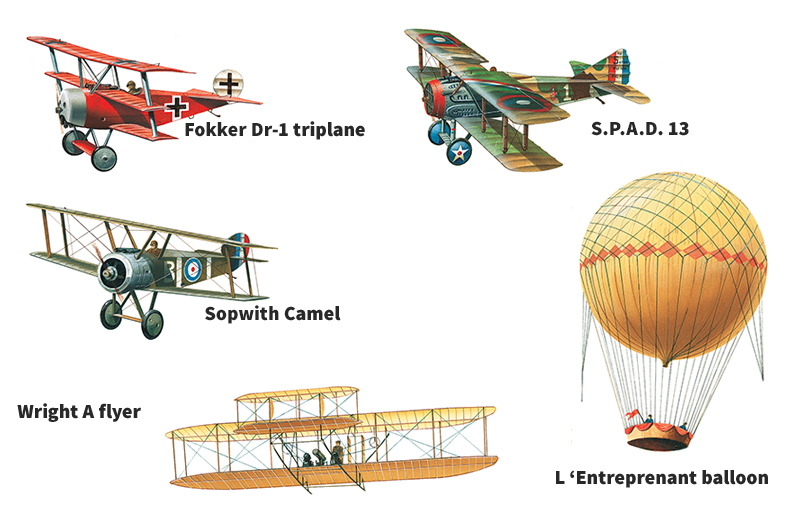
During the 1920’s and 1930’s, further improvements were made in military aircraft design. Biplanes were replaced by aluminum monoplanes. The monoplanes had one main wing, which extended outward from both sides of the body of the plane. Increasingly powerful engines and a streamlined design enabled monoplanes to reach speeds of more than 300 mph (480 kph).
World War II (1939-1945)
sped up the development of piston-engined aircraft and marked the first use of jet planes. One of the most advanced fighters was the British Spitfire, which could fly faster than 450 mph (724 kph) and higher than 40,000 feet (12,000 meters). Late in the war, Germany began to use the Messerschmitt Me 262, the first jet to fly in combat. This plane had a top speed of almost 550 mph (885 kph).
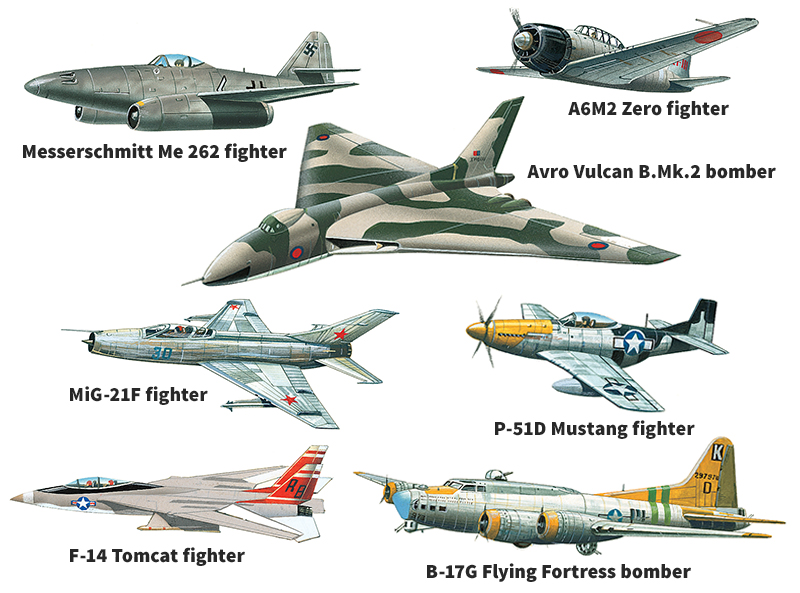
The jet age.
Aircraft technology made further rapid progress during the 1950’s, 1960’s, and 1970’s. For example, new types of wings and other structural improvements greatly increased the speed and maneuverability of jet planes. The United States and the Soviet Union developed jet bombers that could fly nonstop from their own country to the other country in only a few hours.
At the same time, ground warfare was transformed by the wide use of helicopters. Military helicopters were introduced on a large scale in the Korean War (1950-1953), chiefly for transporting supplies and wounded troops. In the late 1950’s, the use of jet engines boosted the speed and lift capacity of helicopters.
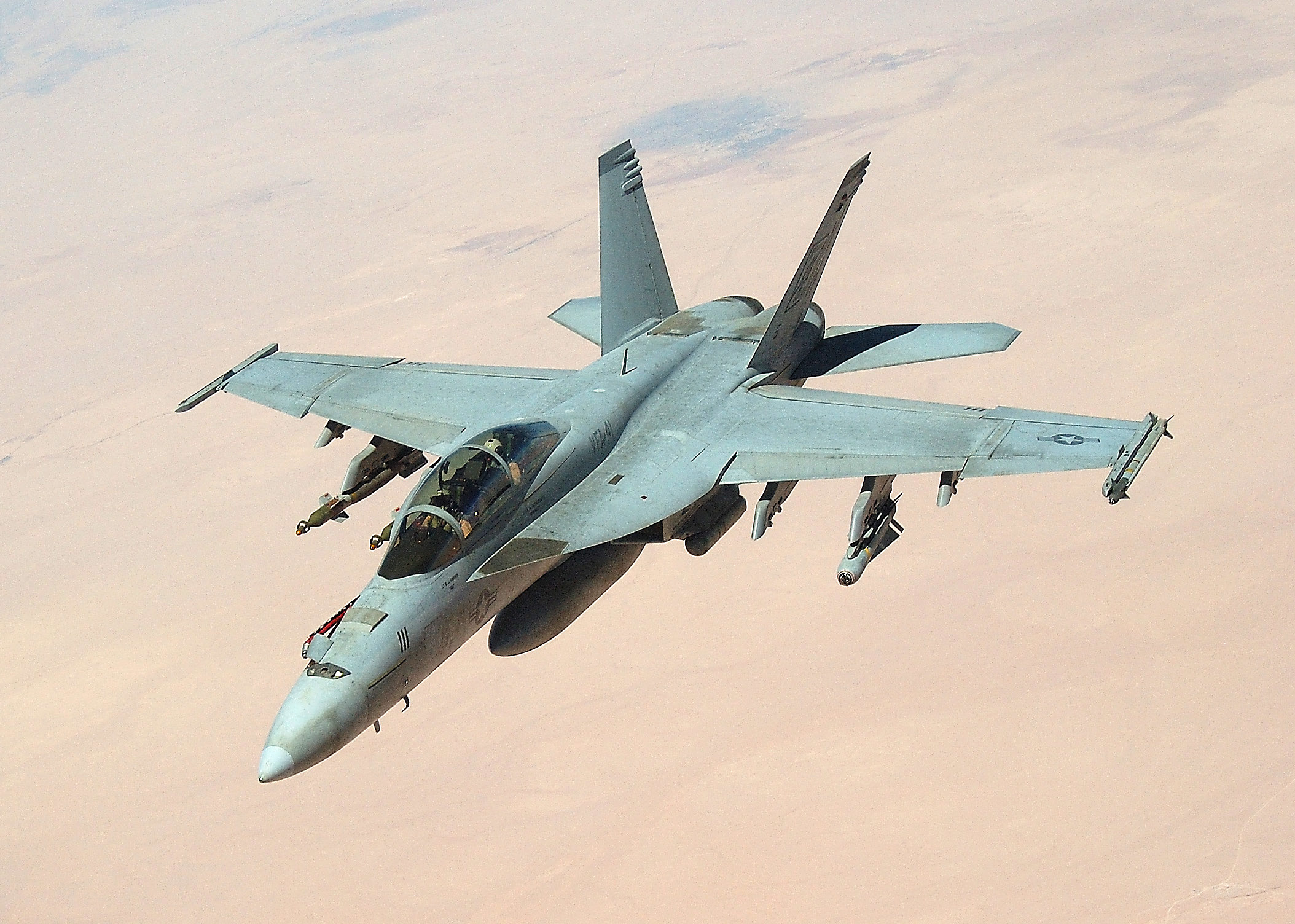
During the Vietnam War (1957-1975), the United States Army, Navy, and Air Force used helicopters for attack, reconnaissance, and transport. Helicopters were also used to rescue pilots shot down in enemy territory.
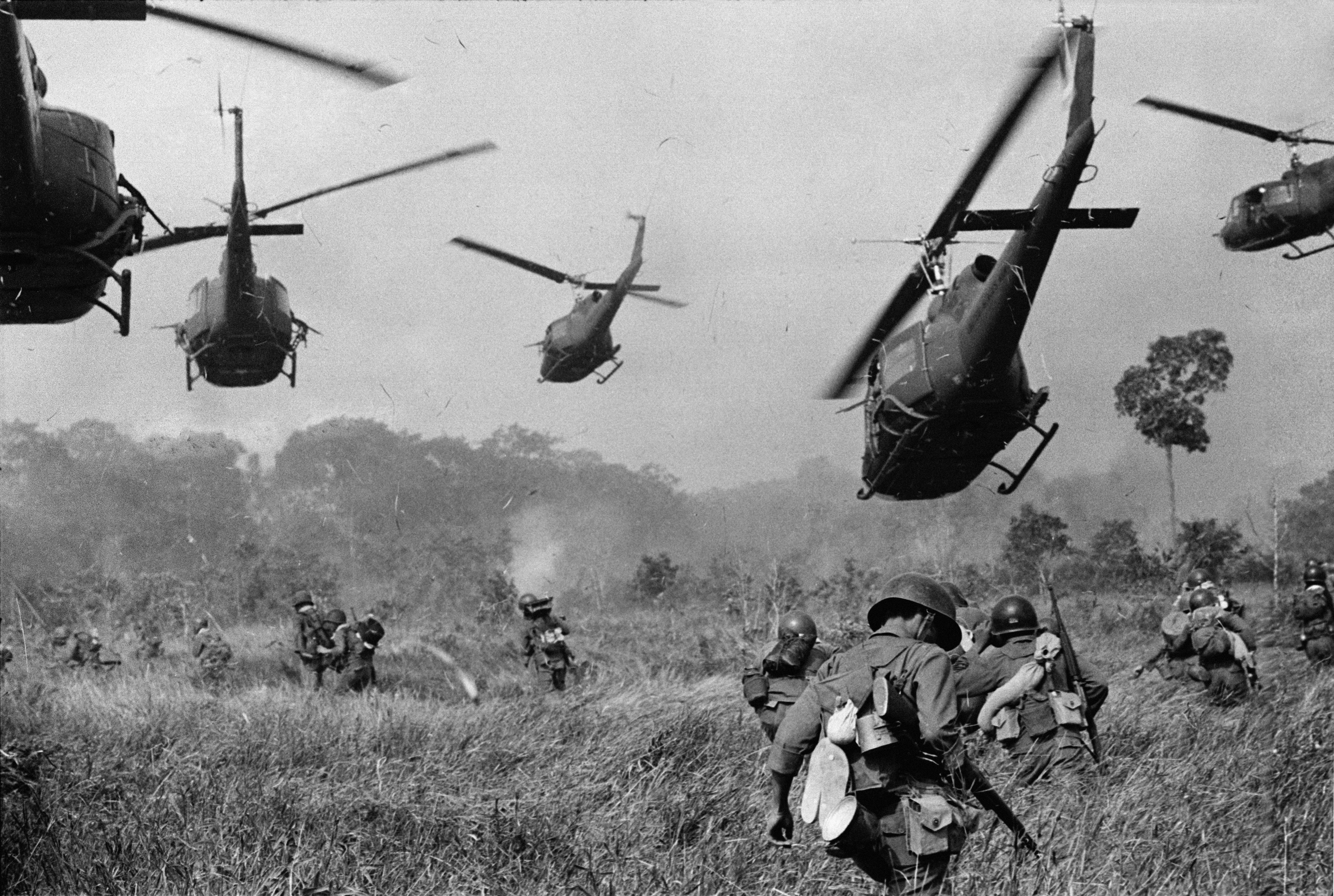
Recent developments
in military aircraft include improvements in design and materials. Surfaces that deflect radar beams and materials that absorb radar energy make “stealth” aircraft difficult to detect by radar. The supercritical wing, which is thinner and flatter than a standard wing, increases the speed and range of planes. Drones capable of shooting missiles at targets became increasingly common in warfare during the early 2000’s.
